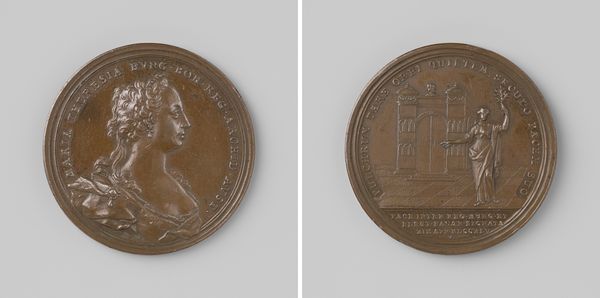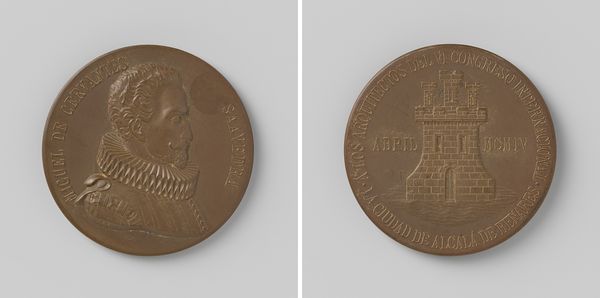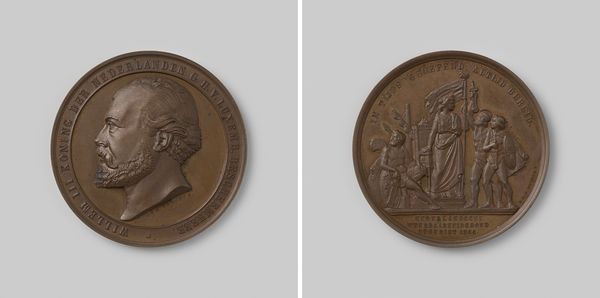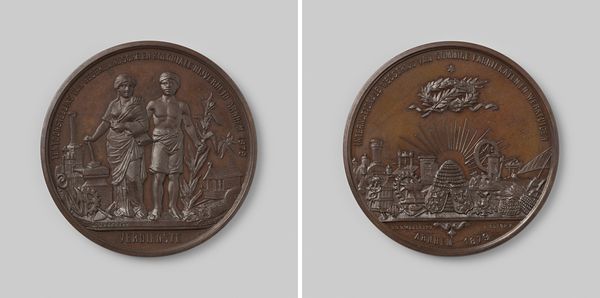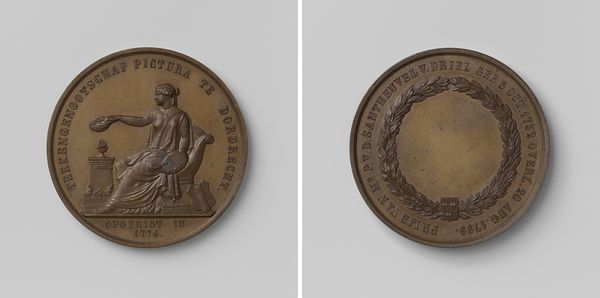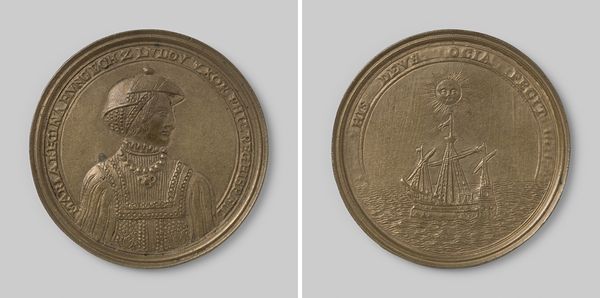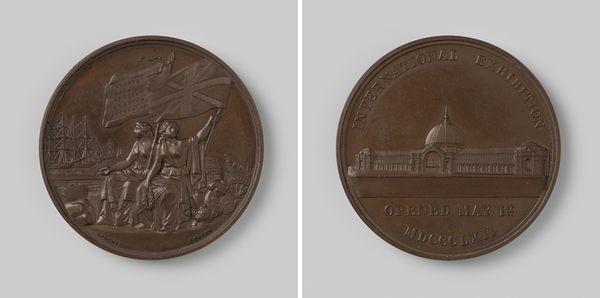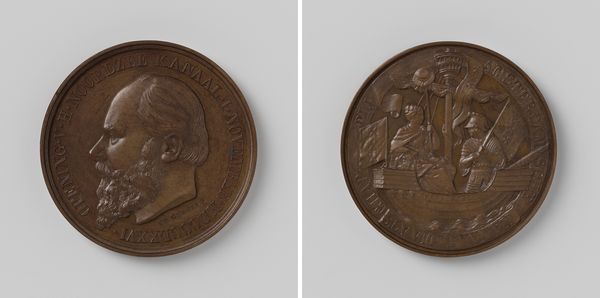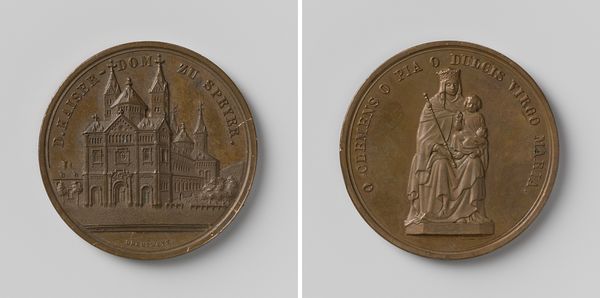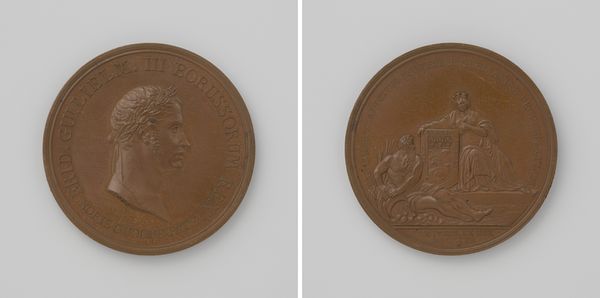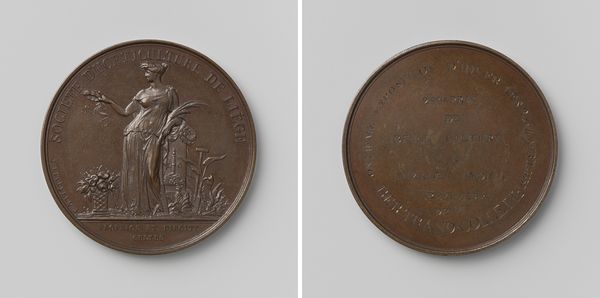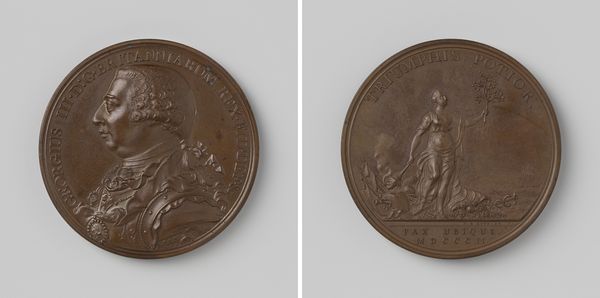
Het regentschap over Koningin Wilhelmina en Nederland aan Koningin Emma opgedragen 1891 1891
0:00
0:00
Dimensions: diameter 5.0 cm, weight 44.29 gr
Copyright: Rijks Museum: Open Domain
Curator: This bronze relief, crafted in 1891 by Ludwig Christian Lauer, commemorates a key moment in Dutch history: "The Regency over Queen Wilhelmina and the Netherlands Assigned to Queen Emma." Editor: Immediately, I notice the duality; the front is dominated by portraits, seemingly of two figures, while the reverse portrays what appears to be a grand estate. The uniform color and the medium evoke a sense of formality, almost austerity. Curator: Absolutely. This medal serves as both historical document and piece of political symbolism. It marks the transition of power to Queen Emma, who assumed regency for her daughter Wilhelmina upon King Willem III’s death. The monarchy was vulnerable at this point. Editor: I am drawn to the material – bronze. Consider its properties: durable, lasting. It underscores the permanence the monarchy hopes to project, while simultaneously hinting at the labor-intensive process of medal making. Were these widely circulated? What kind of skilled labor produced them? Curator: They were gifts to state officials and dignitaries and circulated amongst the higher classes of Dutch society. This particular image cemented Emma’s role and authority, and ensured a continuity of governance in the eyes of the public. She had the skills. She'd ruled while her husband the King deteriorated mentally and physically. She had to be seen to be up to the task. Editor: It’s fascinating how an object like this embodies the aspirations of a society and the labor that makes these kinds of messages concrete. The portraits look almost mass-produced in the way the facial features look uniform and the fact the image looks copied across them both. It’s interesting to note also the architectural representation: rigid, neoclassical, reflecting the need for a display of control at the time. Curator: And the very act of creating such a medal reinforced national identity during a pivotal era of state-building and popular politics. Think about the messages ordinary Dutch citizens internalised as their leadership actively sought national status in the wider political theater. Editor: It leaves me pondering how objects like these, beyond their aesthetic or commemorative value, reveal the intersection of materials, labor, and political intent. Curator: Precisely. This medal presents a tangible point of entry into the history of late 19th century monarchy and nation building.
Comments
No comments
Be the first to comment and join the conversation on the ultimate creative platform.
